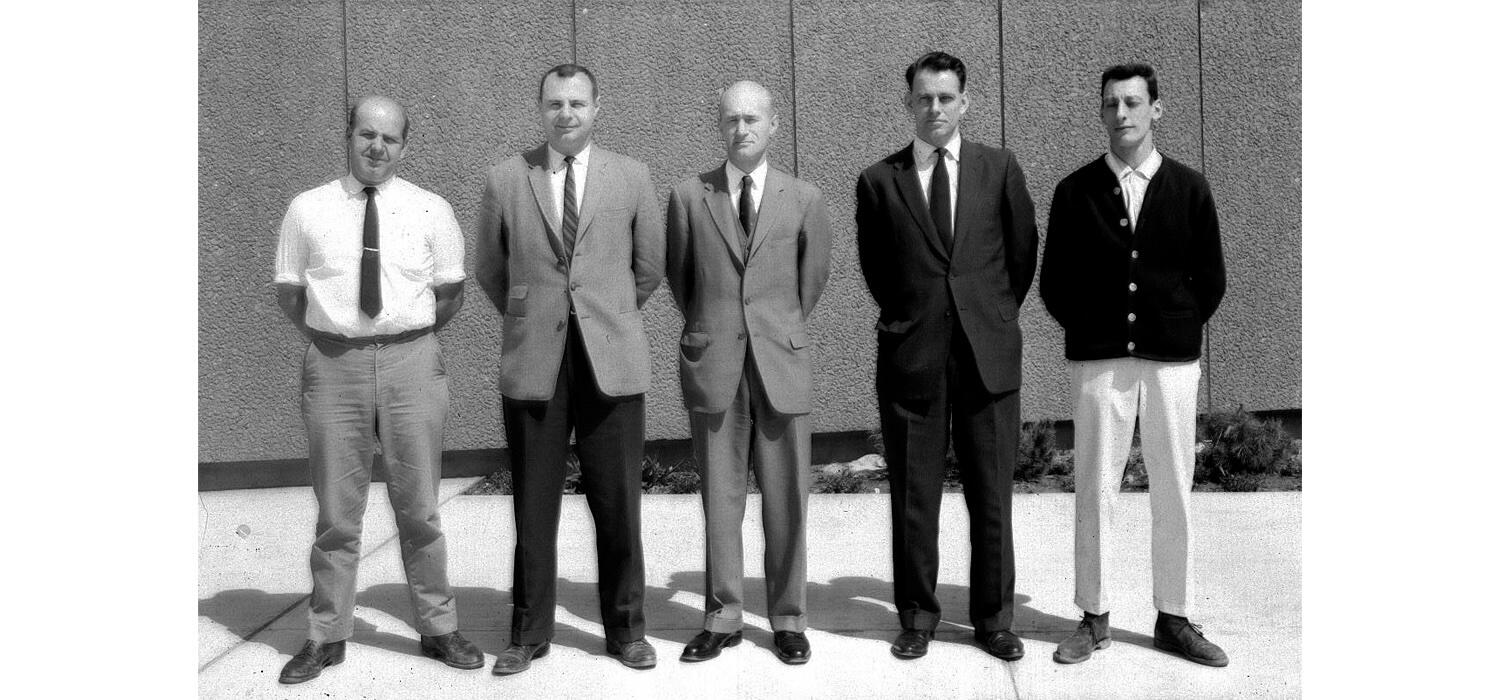Jan. 17, 2024
In Memoriam: Cyril Challice, Faculty of Science

The University of Calgary mourns the death of Professor Emeritus Dr. Cyril Challice, who passed away in Calgary on Dec. 3, 2023 at the age of 97. He was predeceased by his wife, Elizabeth, and is survived by his son, John, and daughter, Anne.
Challice was the founding head of the Department of Physics and Astronomy in the Faculty of Science and was deeply involved in university life. His career as an educator, researcher and administrator spanned over 40 years at the University of Calgary. Known by friends and colleagues as open, friendly and hard working, Challice had a profound impact on the foundation of the Department of Physics and Astronomy and on the many people’s lives he touched through the university, his family, his church and social community.
Challice was raised in north London, United Kingdom, and educated at Latymer School. As a teenager, he endured the terrors of the Second World War, surviving a bomb attack on the factory where he and his mother were working. The war shaped Challice’s early life, but it did not stop him from pursuing graduate studies at the Imperial College of Science and Technology, which was then part of the University of London.
During that time, he built and refined one of the first electron microscopes in Britain to provide high-resolution imaging of biological samples. He then went on to work in the research laboratories of the British Medical Council and St Mary’s Hospital in London alongside Sir Alexander Fleming, the Scottish physician and microbiologist who discovered penicillin.
In 1957, Challice started his position as the founding head of what is now the Department of Physics and Astronomy at the University of Calgary. During his 14 years as department head, he built the department from the ground up, guiding the establishment of several research groups like biophysics, space physics and electron paramagnetic resonance. Later, he strongly supported the study of astronomy and the development of the Rothney Astrophysical Observatory within the department.
“He will be remembered as an able administrator with a strong and abiding commitment to the welfare of students, both undergraduate and graduate,” says Dr. Alan Clark, professor emeritus of physics and close friend of Challice’s.
Challice’s research on the electrical properties of the heart placed him at the forefront of his field and earned him numerous awards, including being one of first academics to receive a Killam Resident Fellowship. Despite his commitment to this research, he taught first-year physics courses from his time as department head until his retirement, maintaining the firm belief that all university faculty should contribute to undergraduate teaching.
Challice believed in the practice of ceremony and acted as the university’s procession mace bearer at convocations for over a decade and spearheaded the design of the mace for use in these ceremonies.
“He was always well-dressed and enjoyed this ceremonial part of university life. He and Elizabeth were active members of the alumni association after their retirement and counted many of Cyril’s colleagues as close personal friends,” says Clark.
In addition to his rich life at the university, Challice was a man of faith and was deeply involved in the Anglican community in Calgary. While working at the university, he was ordained priest and played a major role in the Anglican Diocese of Calgary. Challice also had a wealth of practical skills. He and his wife built a cottage, with almost no outside help, in Bragg Creek and spent many years enjoying rural life there after his retirement.
The University of Calgary offers deep thanks to Dr. Cyril Challice for the contributions he made to the university, his research field and the community at large. The flag on Swann Mall will be lowered to half-mast on Jan. 17 to pay tribute to his life.
